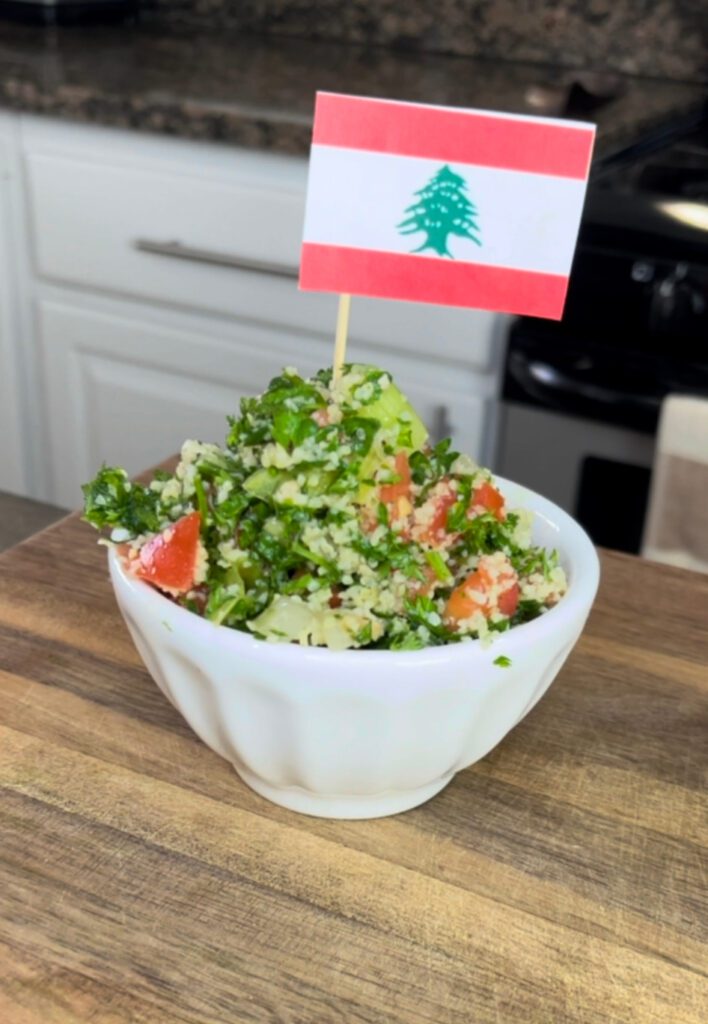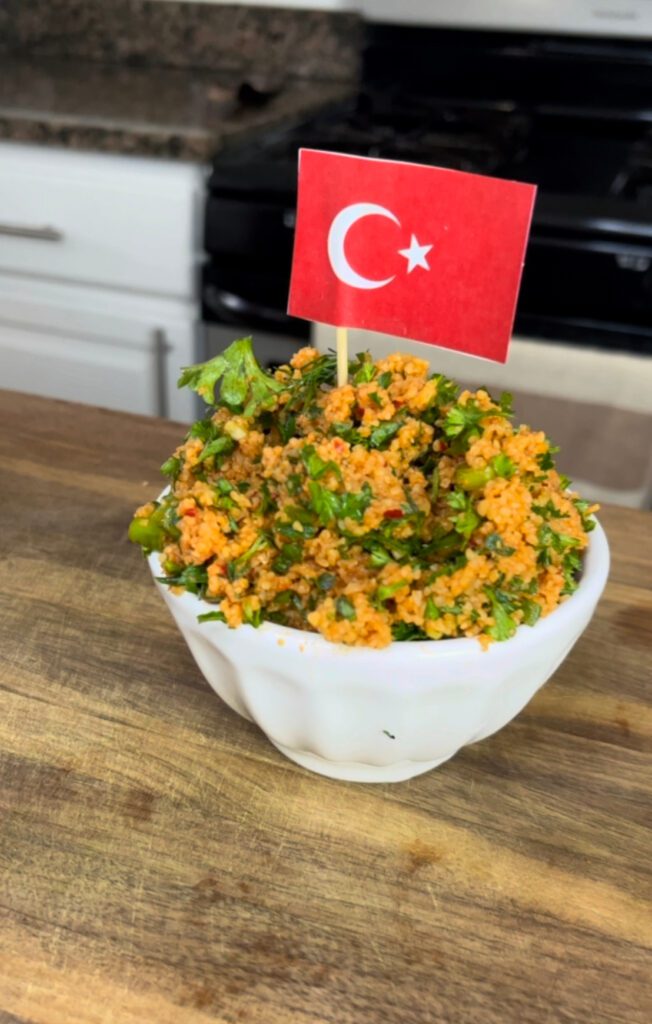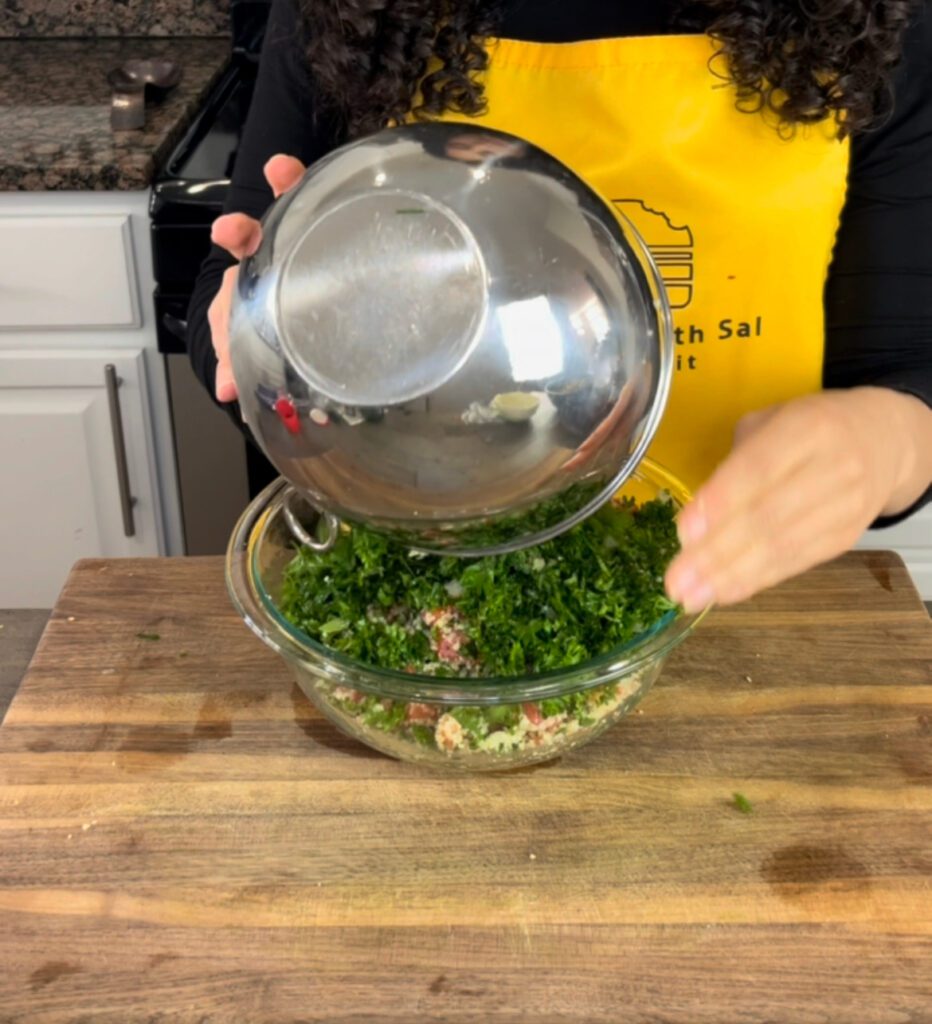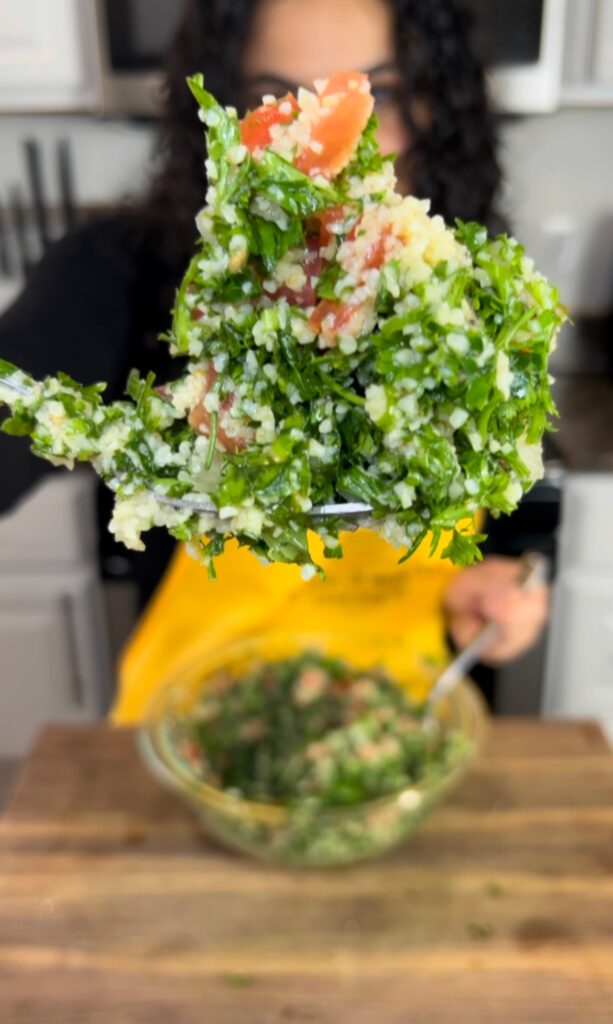Welcome to Food Feuds, where we rate similar dishes from different countries to figure out who does it better!


Tabbouleh vs Kisir
Tabbouleh shares similarities with Kisir, but the main distinction lies in the dressing. Kisir incorporates red pepper paste, pomegranate molasses, and spices into the dish, while tabbouleh omits these ingredients, with the main flavors derived from parsley, olive oil and lemon juice.
n the latest installment of Food Feuds, “Kickin’ it with Sal” serves up a flavorful face-off between two culinary titans: Lebanese Tabbouleh and Turkish Kisir. This episode delves into the subtle yet significant distinctions in dressings and ingredient proportions that set these dishes apart.
What is Tabbouleh?
Tabbouleh is a Middle Eastern salad made with finely chopped parsley, tomatoes, mint, onion, soaked bulgur, seasoned with olive oil and lemon juice.
Tabbouleh finds its roots in the rich culinary heritage of the Levant, specifically Lebanon. Traditionally served as part of the mezze spread, this salad has become synonymous with freshness and vibrant flavors.
In Tabbouleh, the star of the show is undeniably the parsley, and it takes center stage in this vibrant dish. Equally crucial is the choice of a fine-grain bulgur, which complements and enhances the parsley’s prominence. The balance between these two elements, with the parsley as the main feature followed by the fine-grain bulgur, is key to capturing the authentic essence of Tabbouleh.
The vibrant green color of Tabbouleh is a hallmark of its fresh and herbaceous character. The combination of finely chopped parsley, mint, and other fresh ingredients not only contributes to the visual appeal but also promises a burst of vibrant flavors with every bite. Tabbouleh’s lively green color is a testament to its emphasis on fresh, wholesome ingredients and a delightful feast for both the eyes and the palate.


What is Kisir?
Kısır is a traditional Turkish dish that is often considered a type of salad or mezze. It is a popular item in Turkish cuisine, especially during summer months. The main ingredient in kısır is fine bulgur (cracked wheat), and it is typically mixed with finely chopped fresh vegetables, herbs (such as parsley and mint), tomatoes, green onions, and various spices. The mixture is then flavored with olive oil, pomegranate molasses, and lemon juice, giving it a tangy and refreshing taste.



Tabbouleh vs Kisir Food Feuds
Sensory Analysis
- Taste/Texture: 8.5/10 This salad has a refreshing and herbaceous taste that come from the lemon juice and freshly chopped parsley. The bulgur adds a little bit of texture in the dish so it’s not all parsley. I enjoyed how there was a bit of crunch from the cucumbers and tomatoes. It also contributed to overall refreshing taste. Whenever I eat tabouleh I find it to be very grainy and rough for a salad and the amount of parsley can be overwhelming at times.
- Appearance: 9.5/10 Honestly, all the colors in the dish makes it look beautiful. There is a lot of texture in this dish coming from the parley and bulgur.
- Overall: 9/10
- Taste/Texture: 8.0/10 Kisir has a very tangy taste and it comes from the pomegranate molasses combined with the tomato and red pepper paste. Some people cook the red pepper and tomato paste which would probably release some of the tanginess but I did not do that in this recipe. This dish’s main ingredient is made with bulgur and a bit of other herbs and veggies are added to it. I found it to be too tangy but this could be adjusted.
- Appearance: 9.5/10 I loved the bright red vibrant color of this dish and I found that the bulgur was fluffier in the kisir. I think adding hot water to the bulgur resulted in a more fluffier end product.
- Overall: 8.75/10
Winner Winner
Tabbouleh is the overall winner! I found it to be more refreshing and not as sour.
What your favorite? Tabbouleh or Kisir?

